
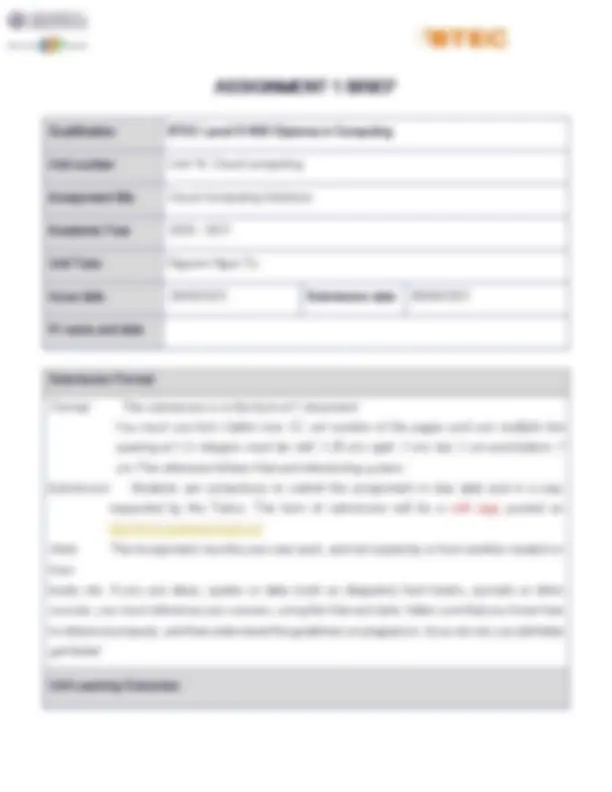
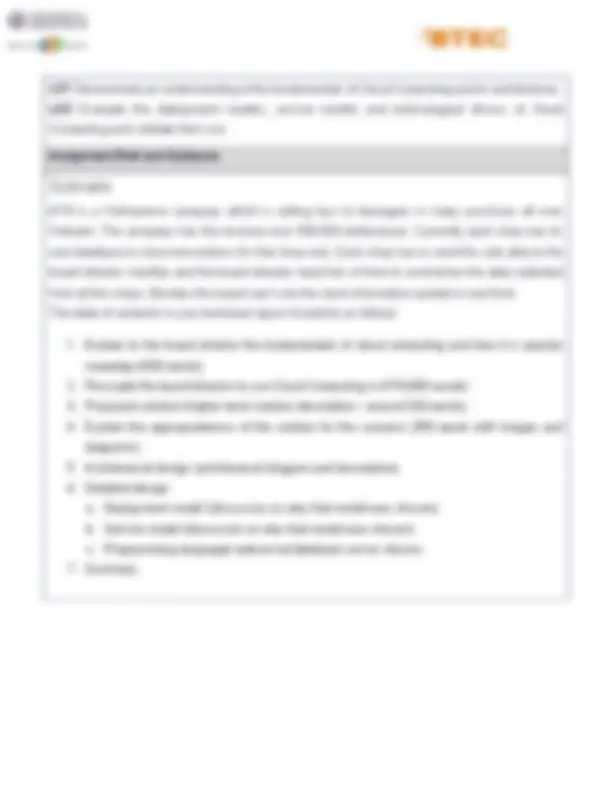
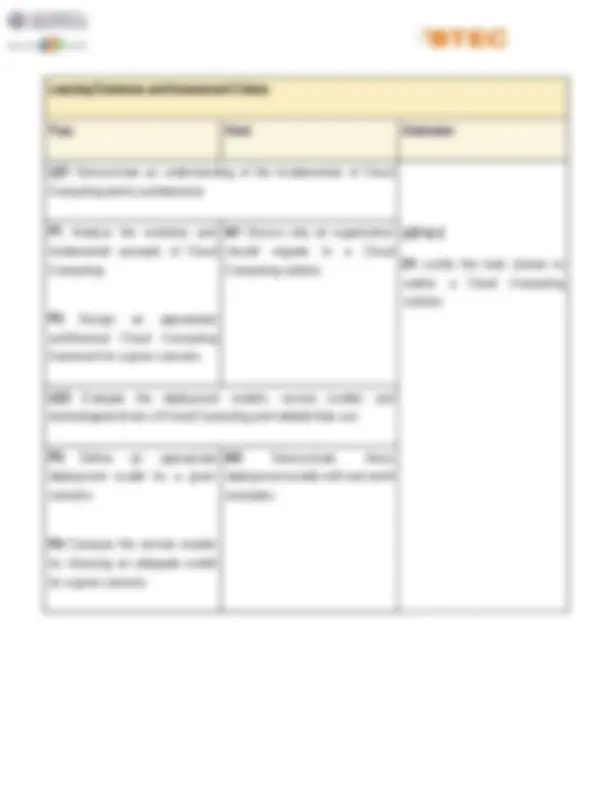

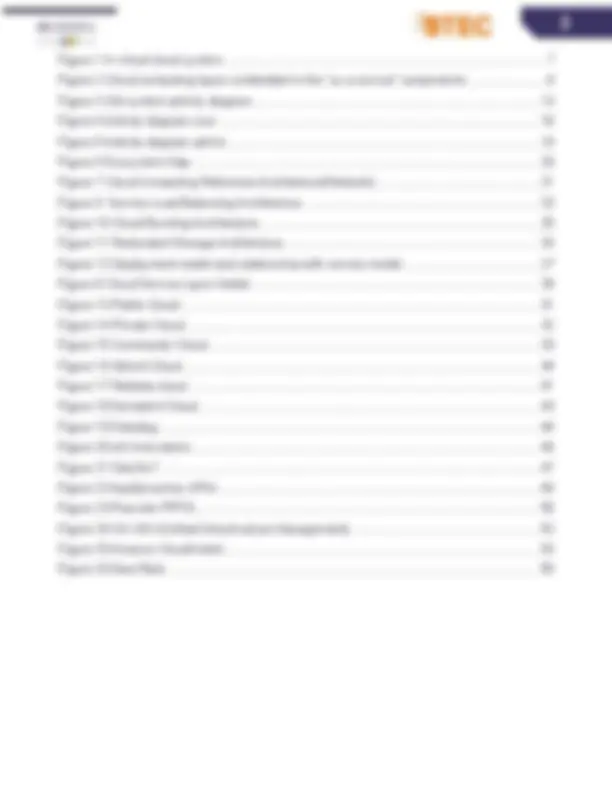
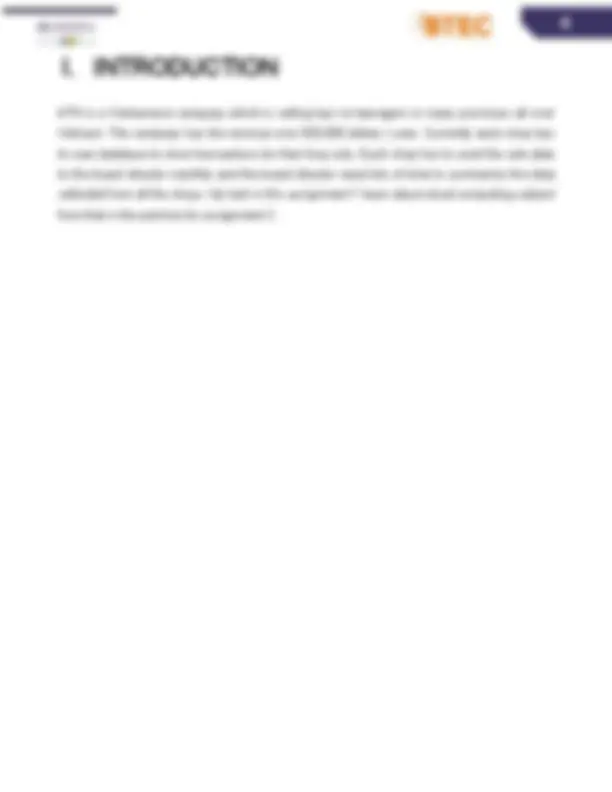
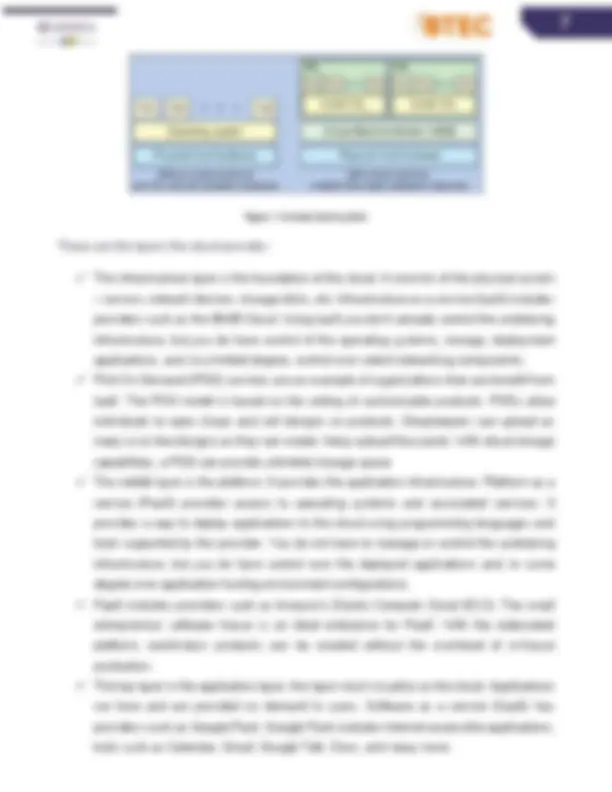
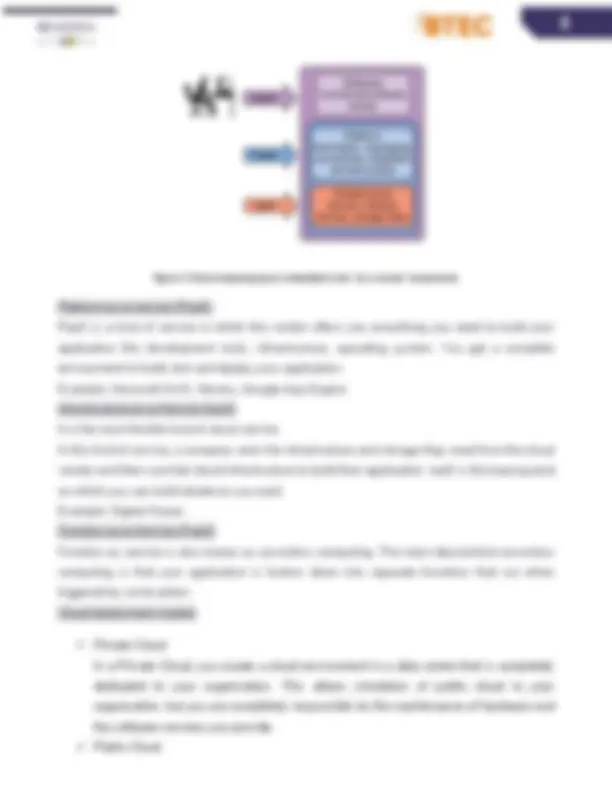
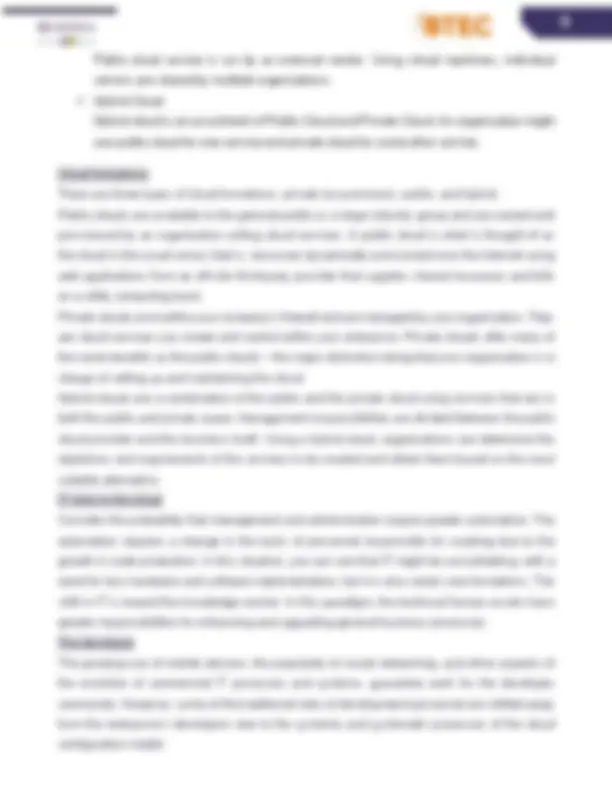
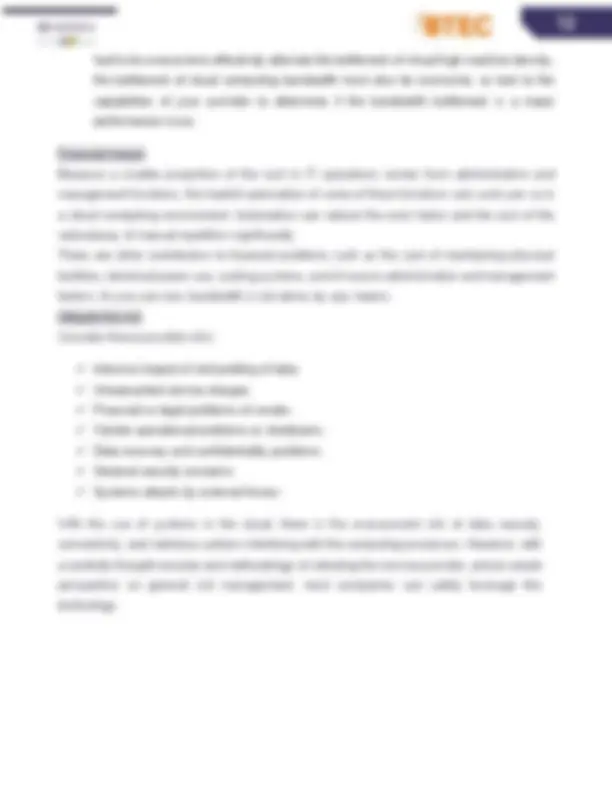
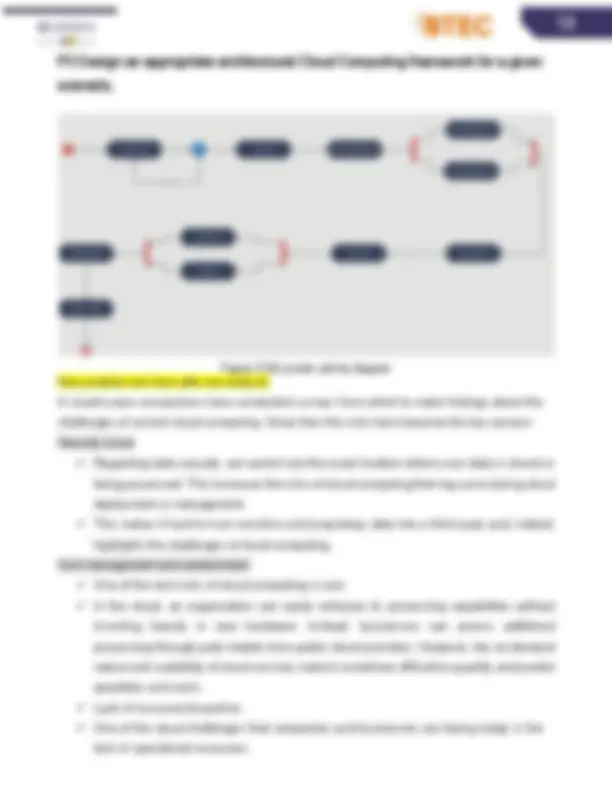
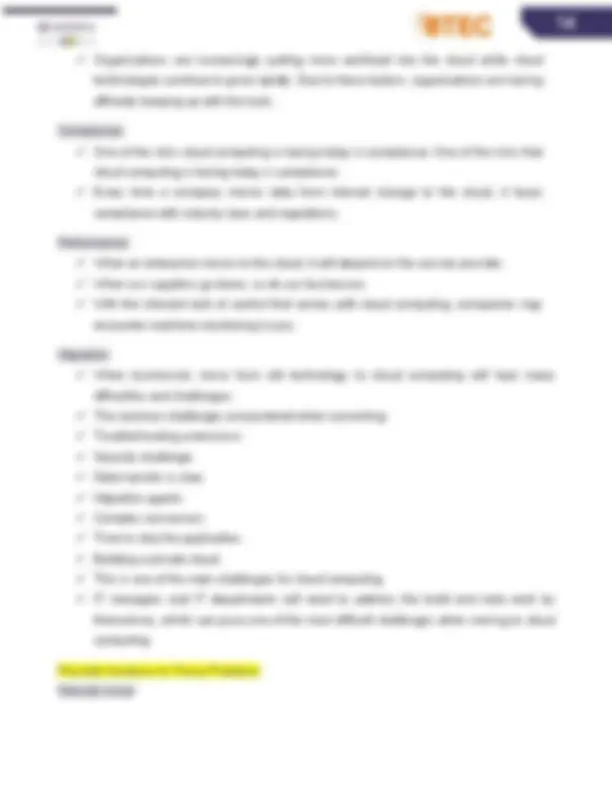
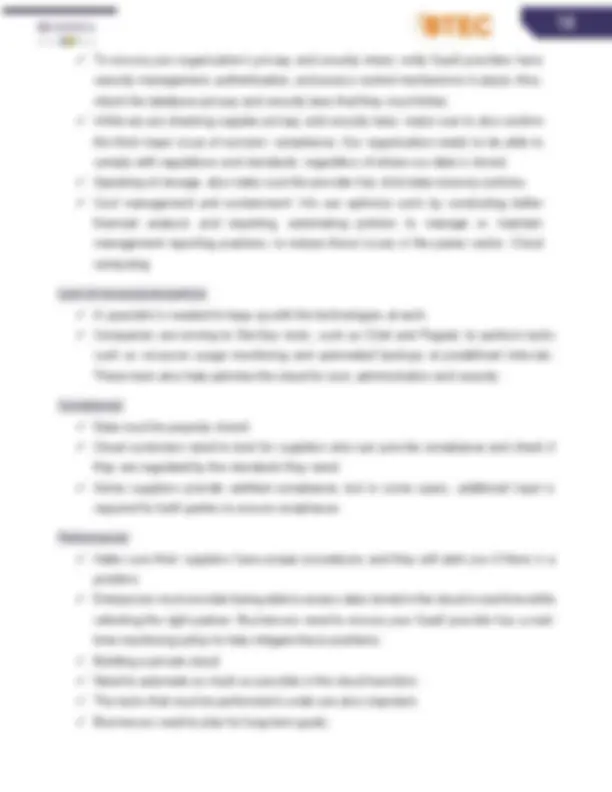
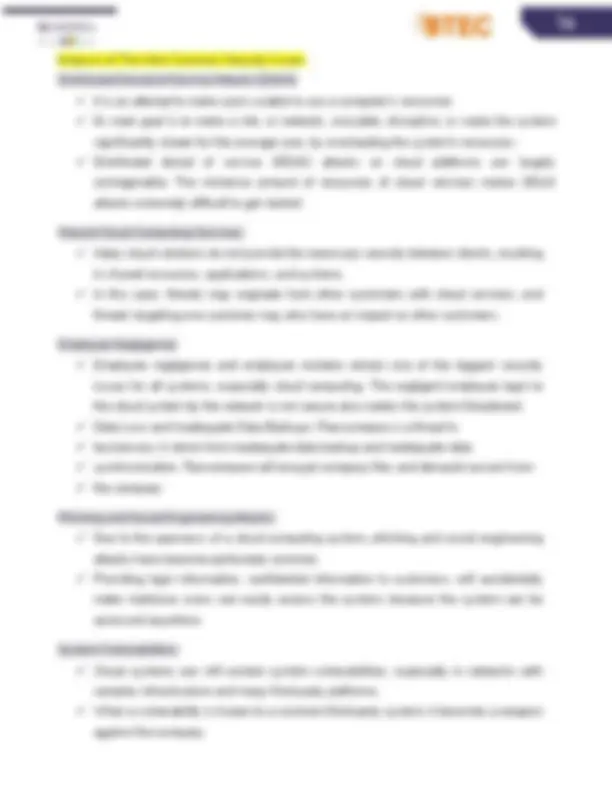
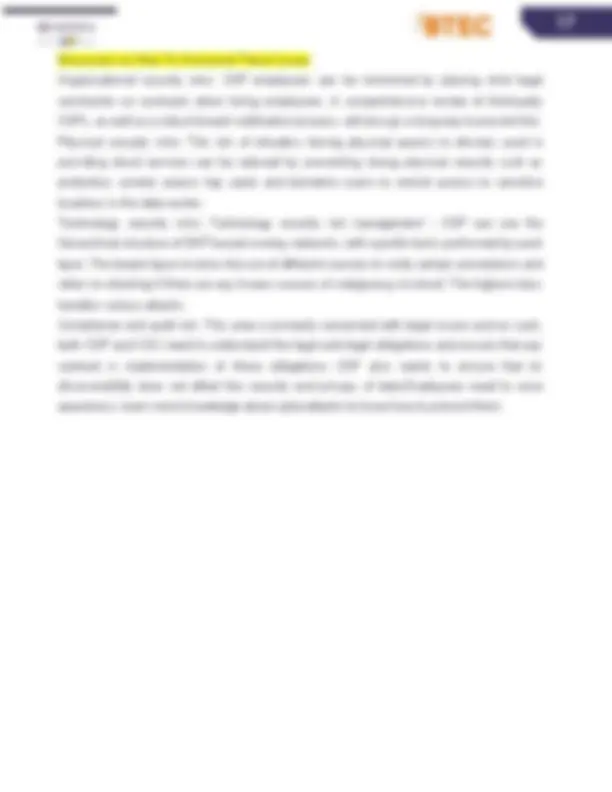
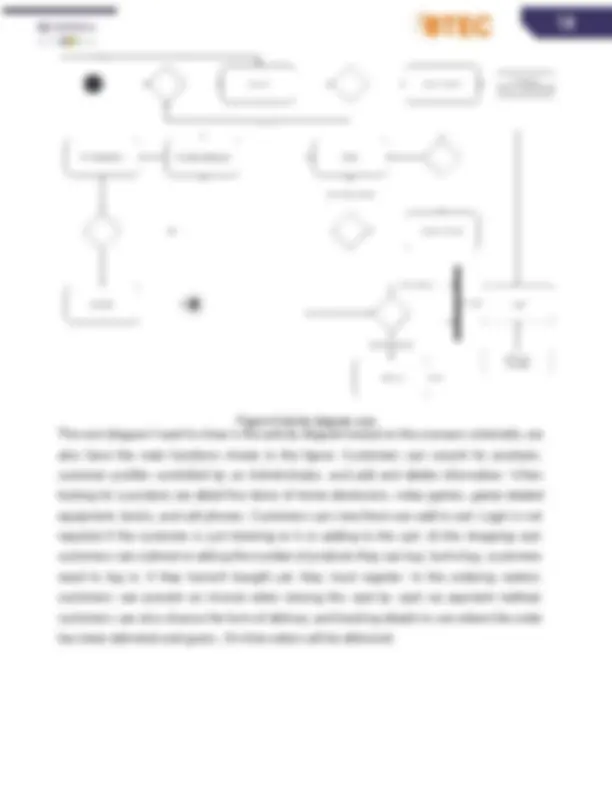
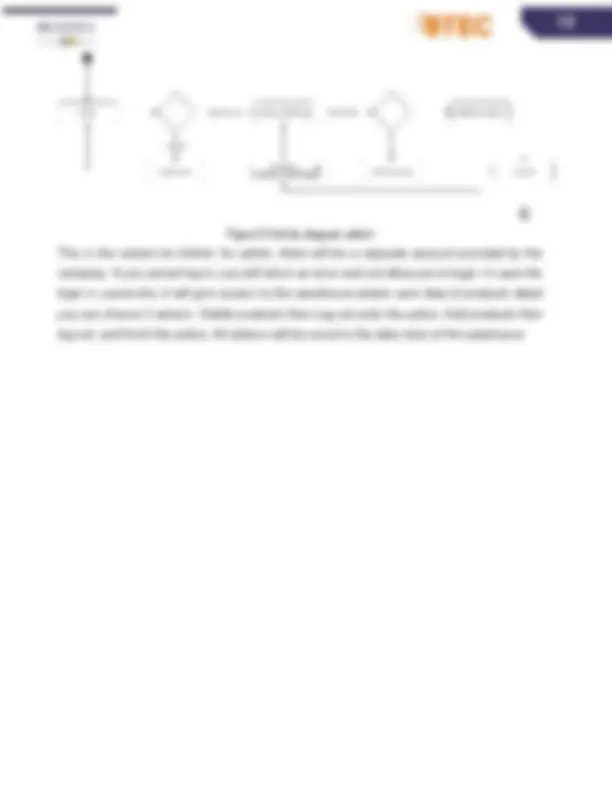
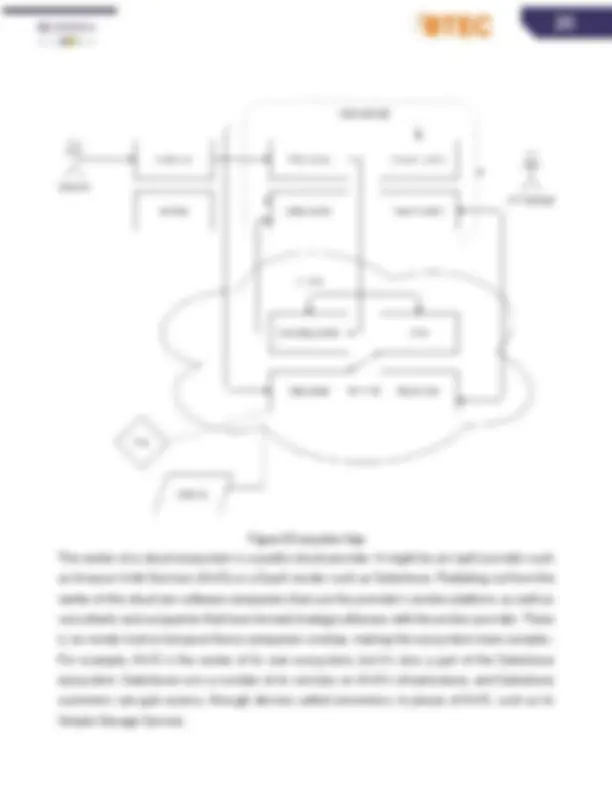
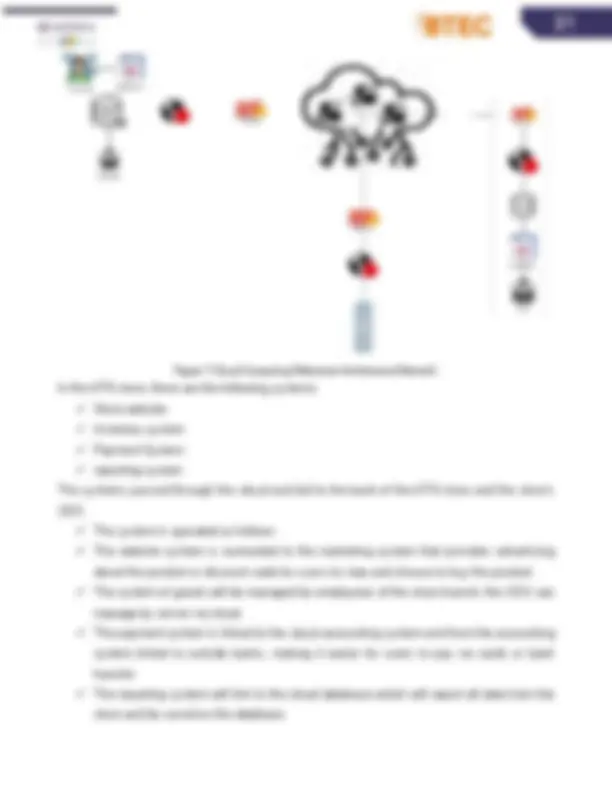

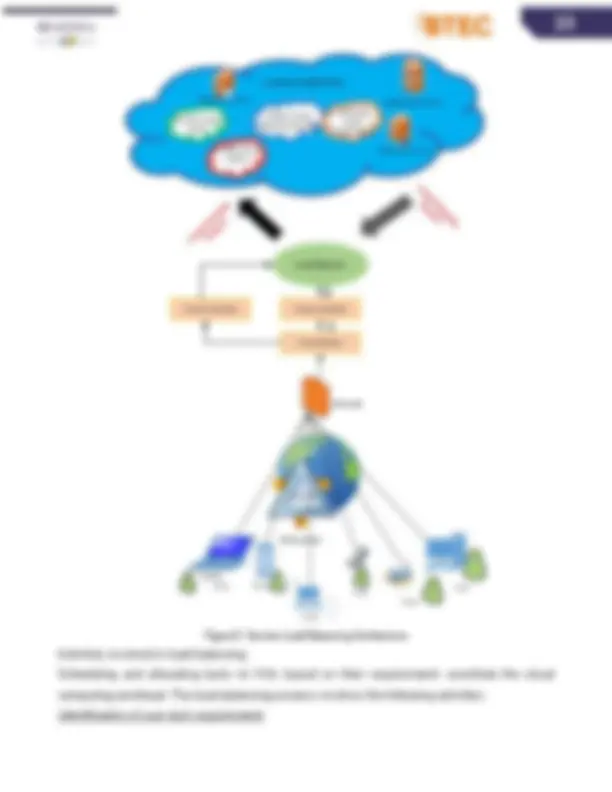
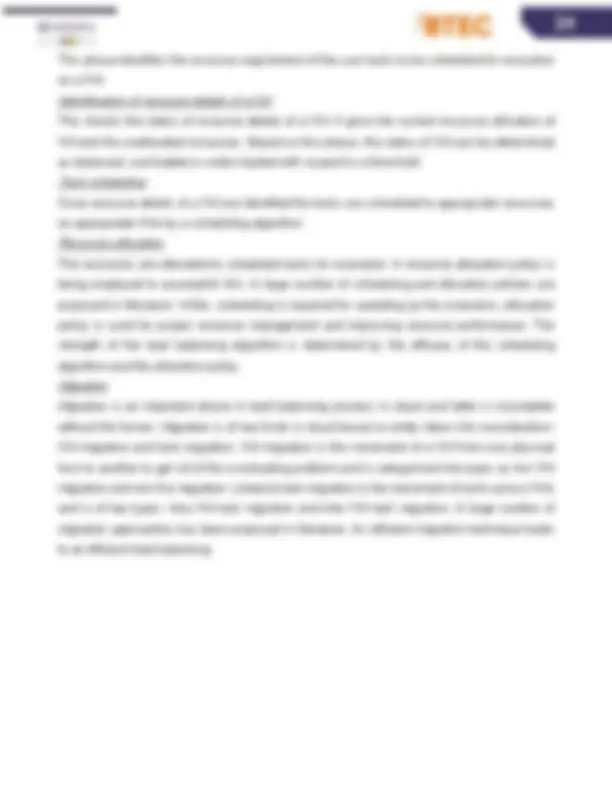
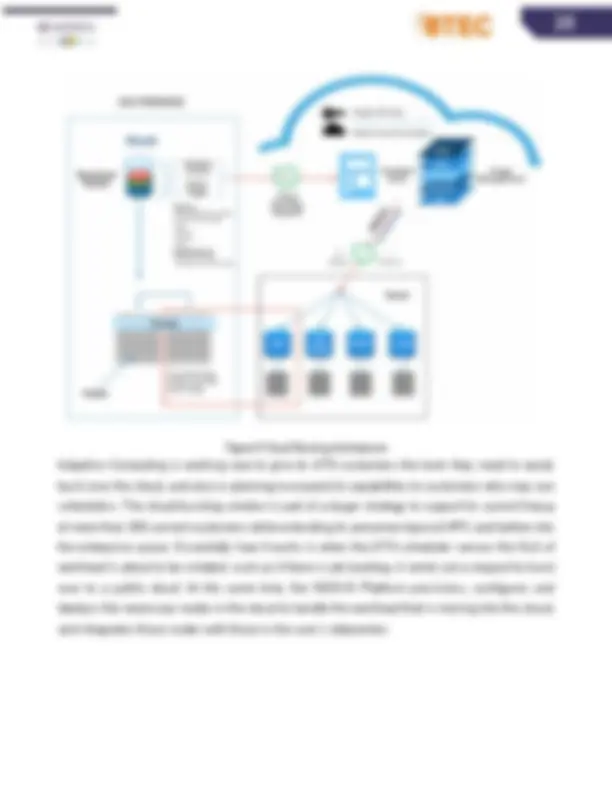
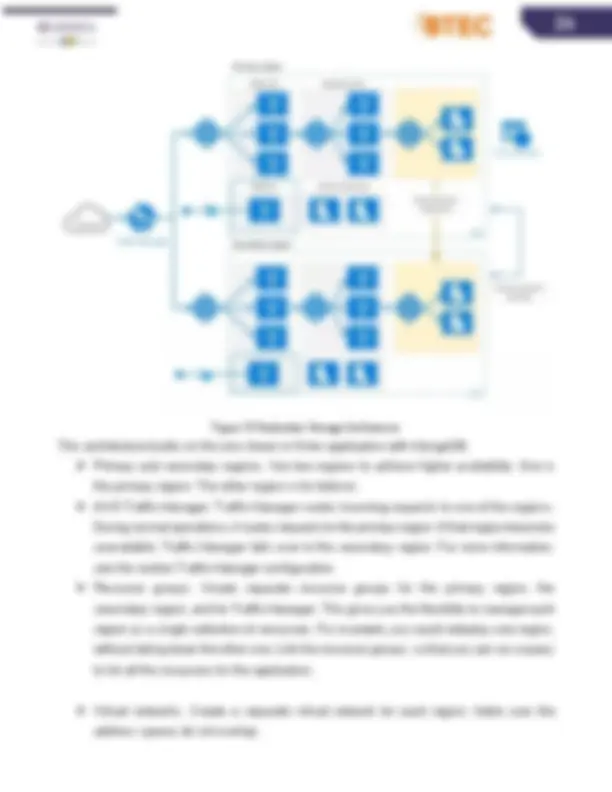
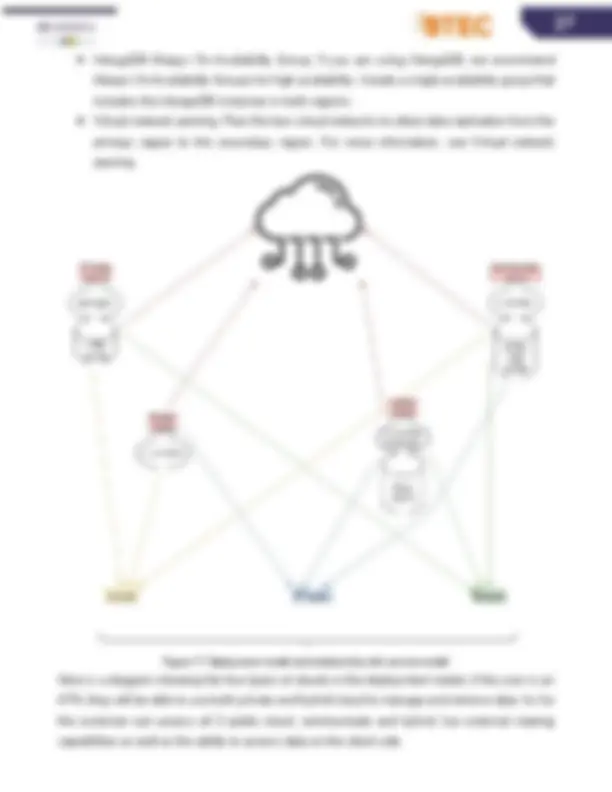
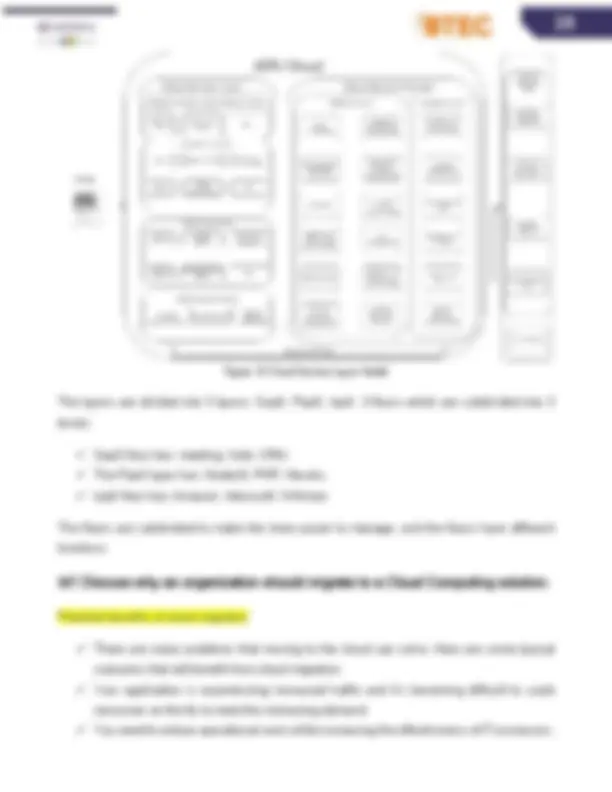
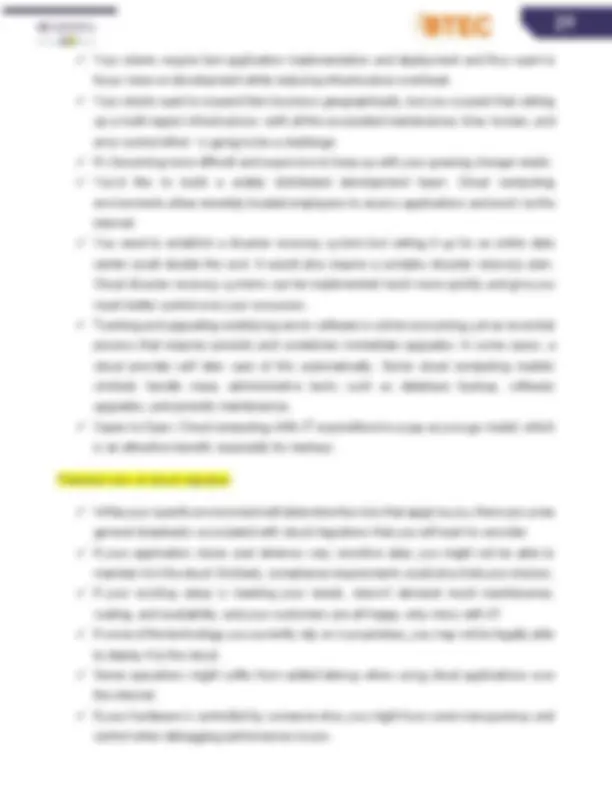

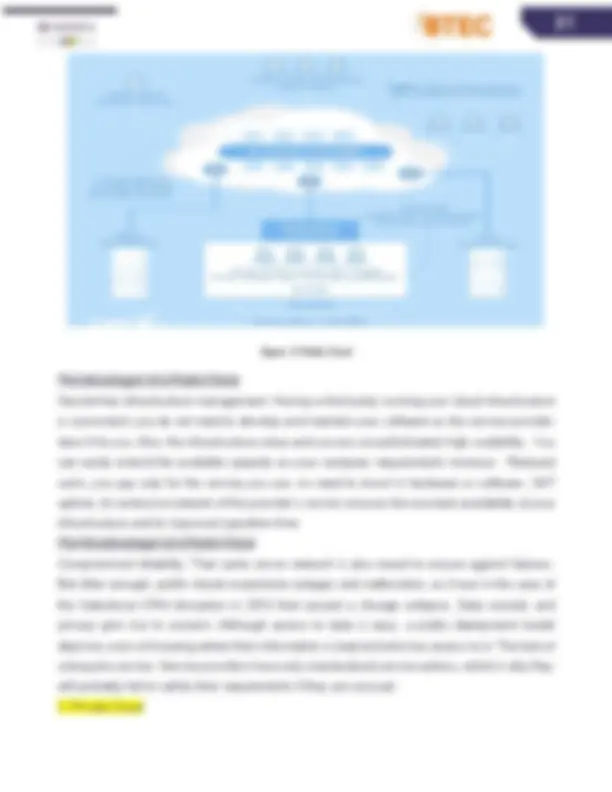
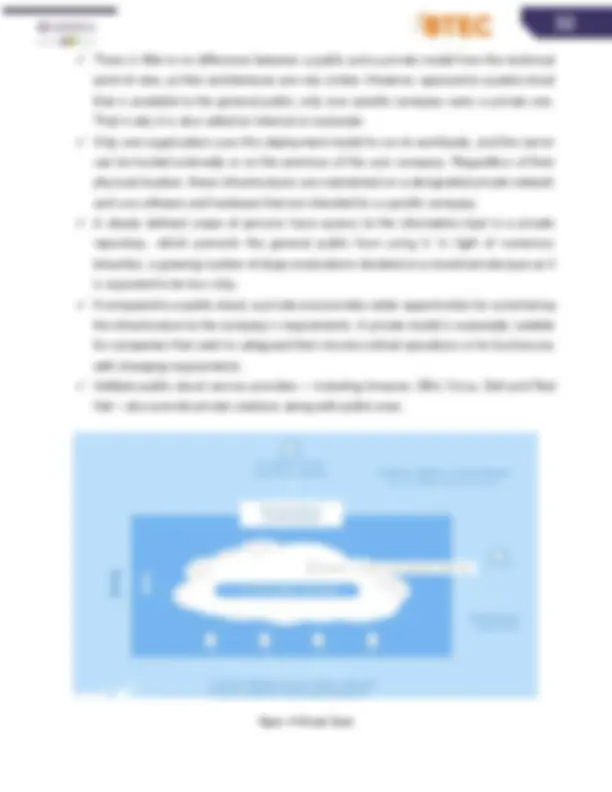
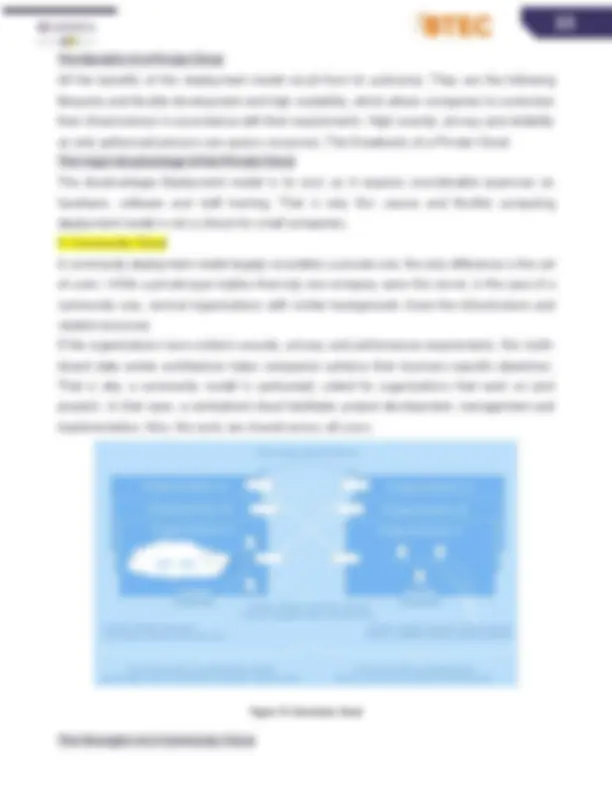
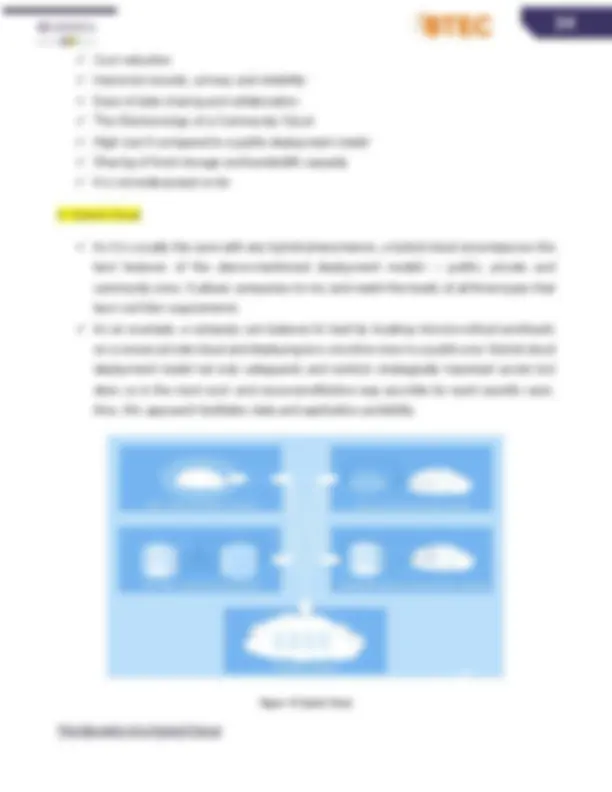
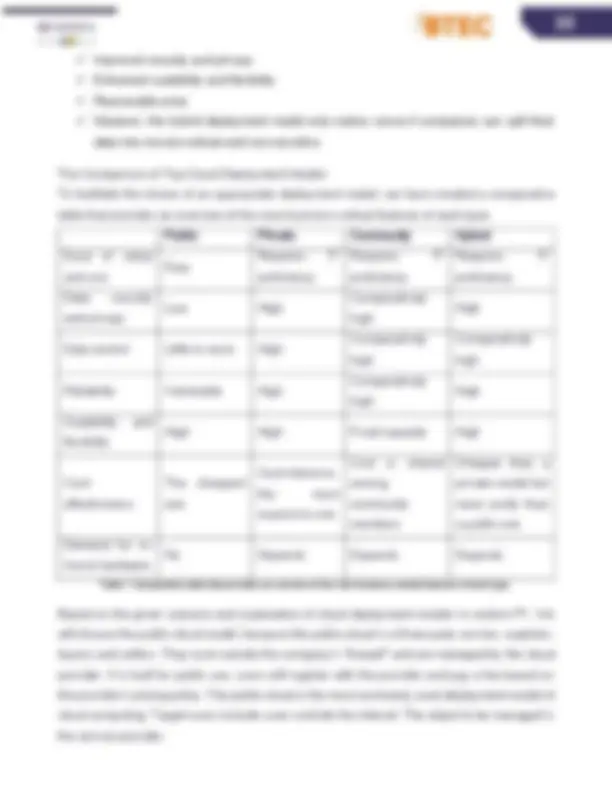
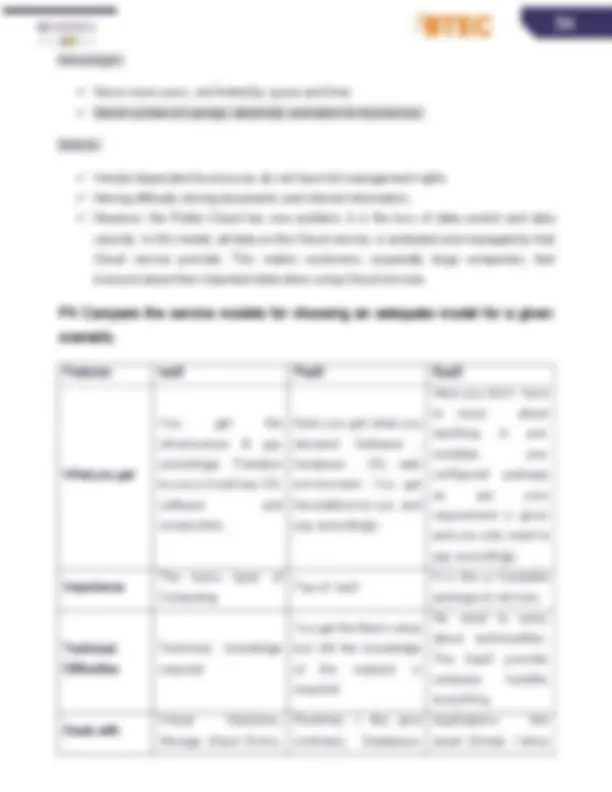
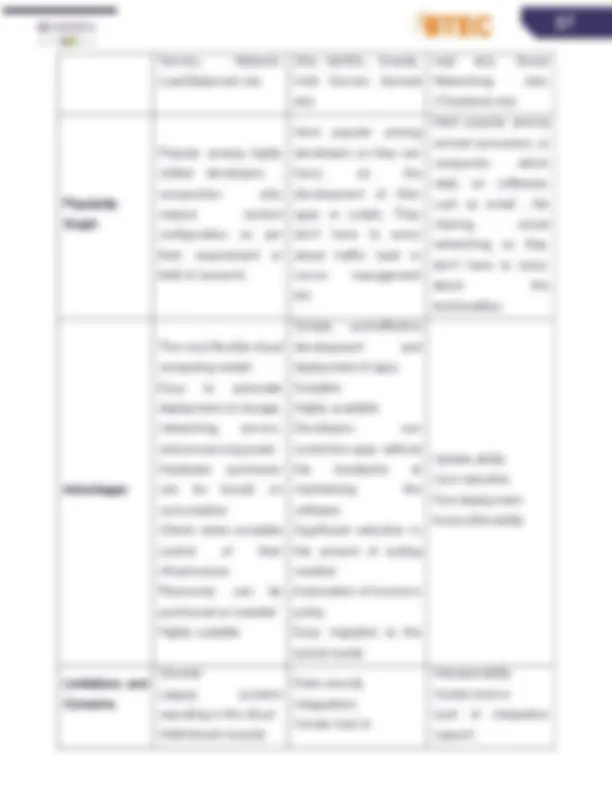
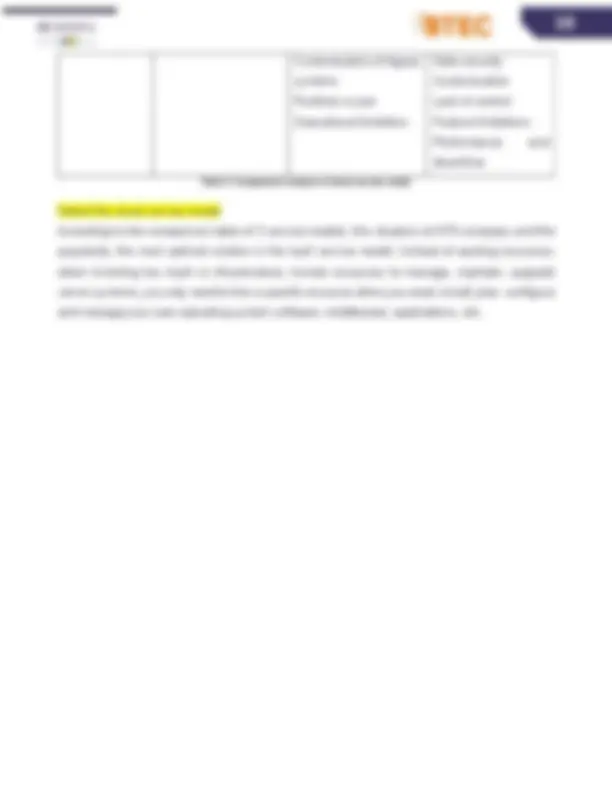
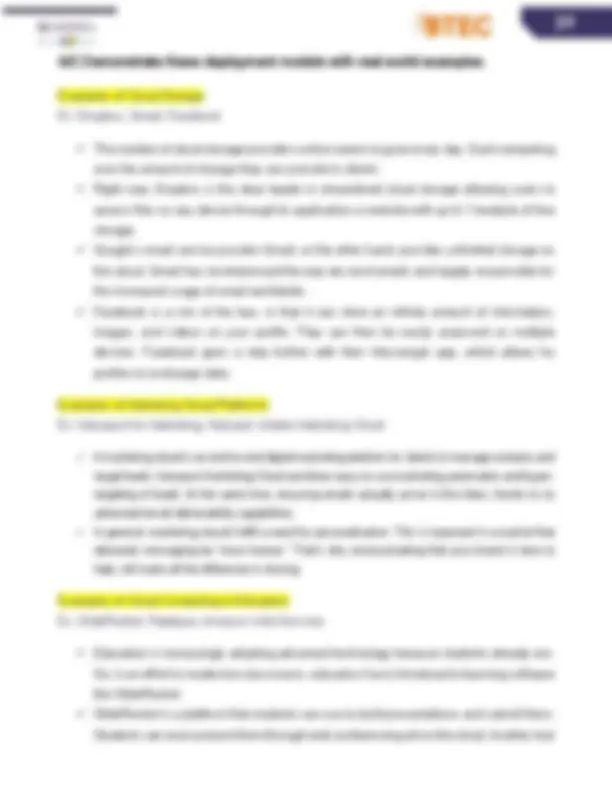
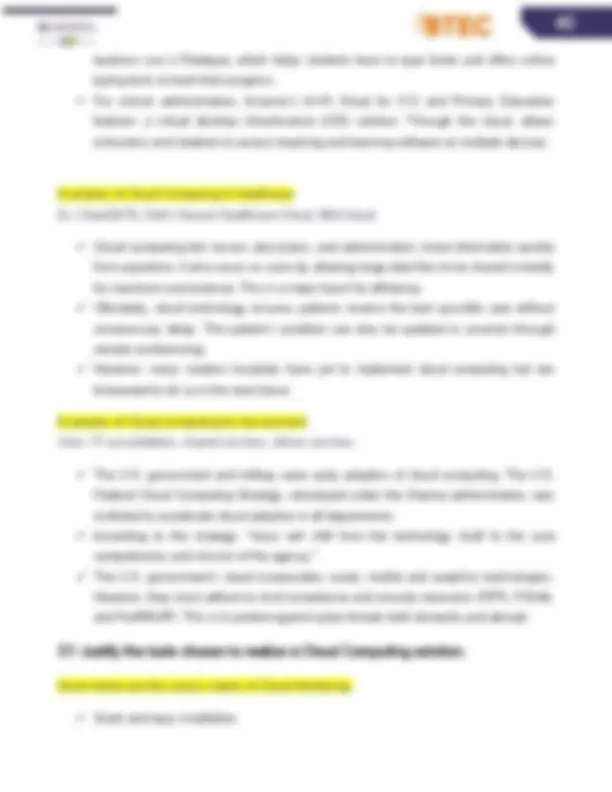
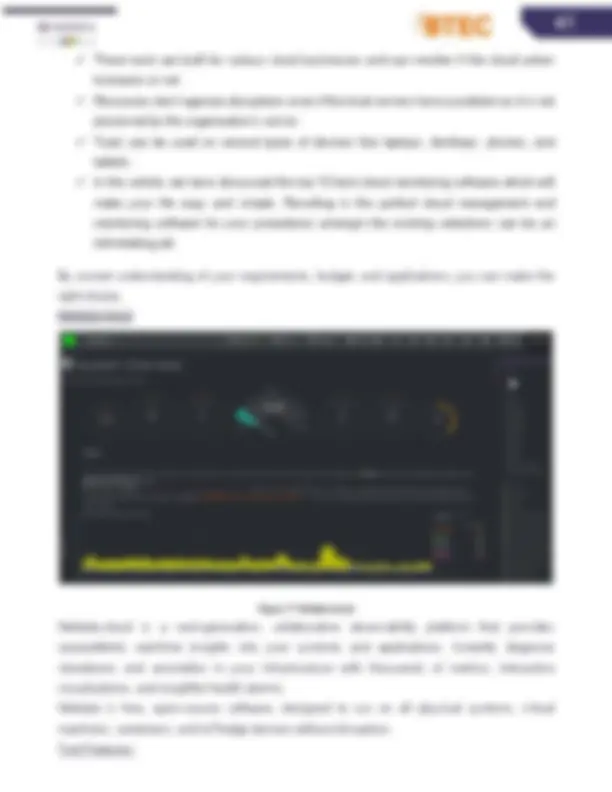
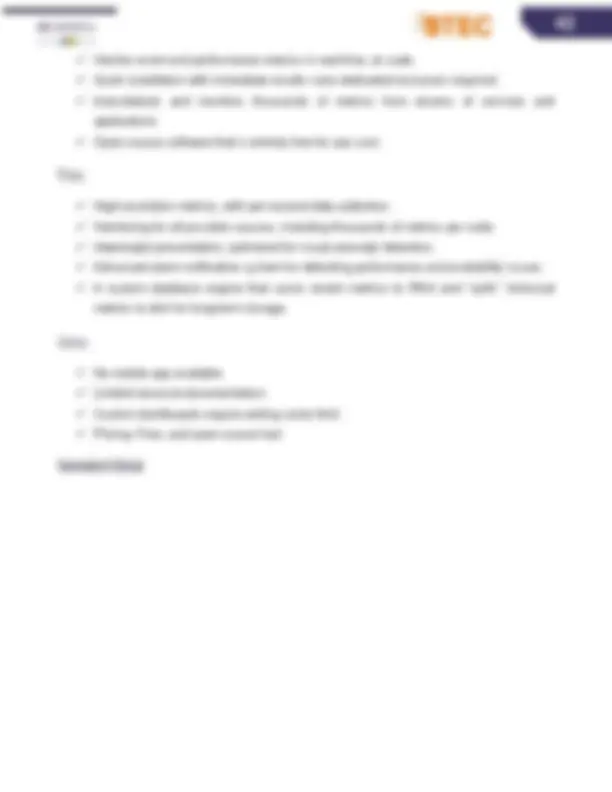
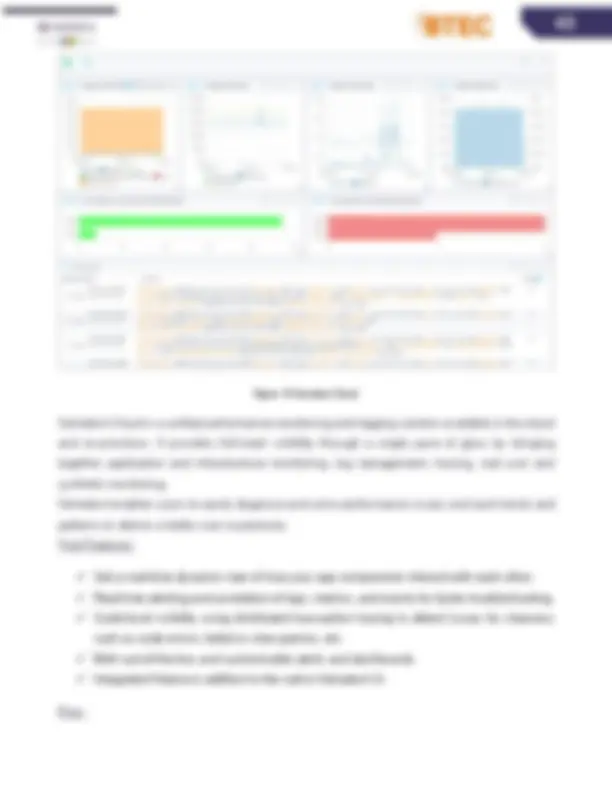
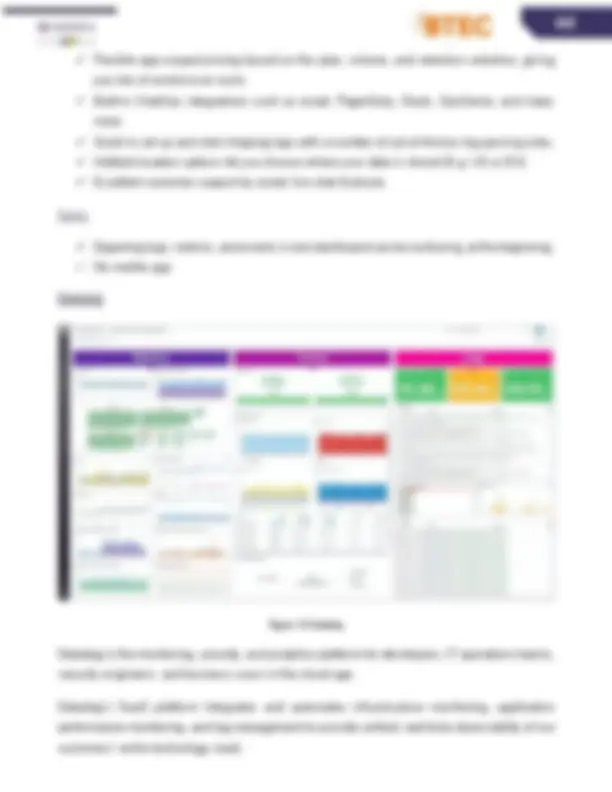
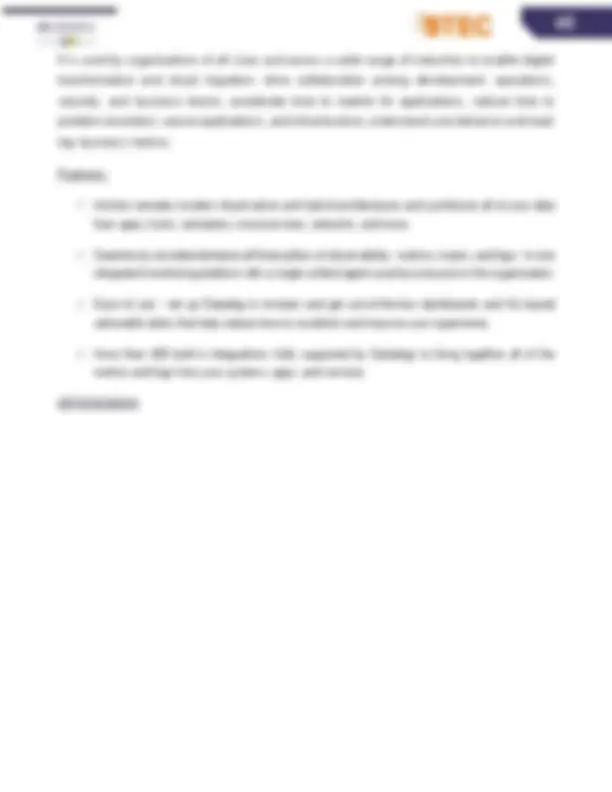
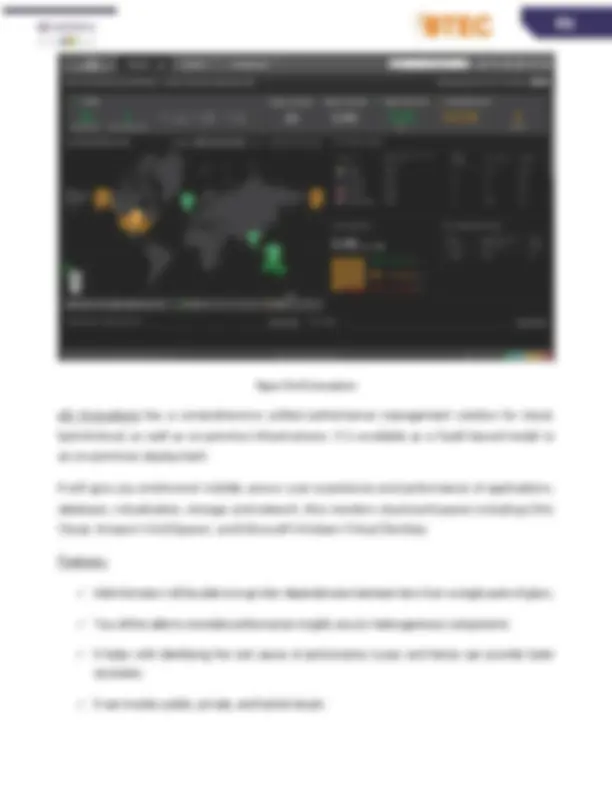
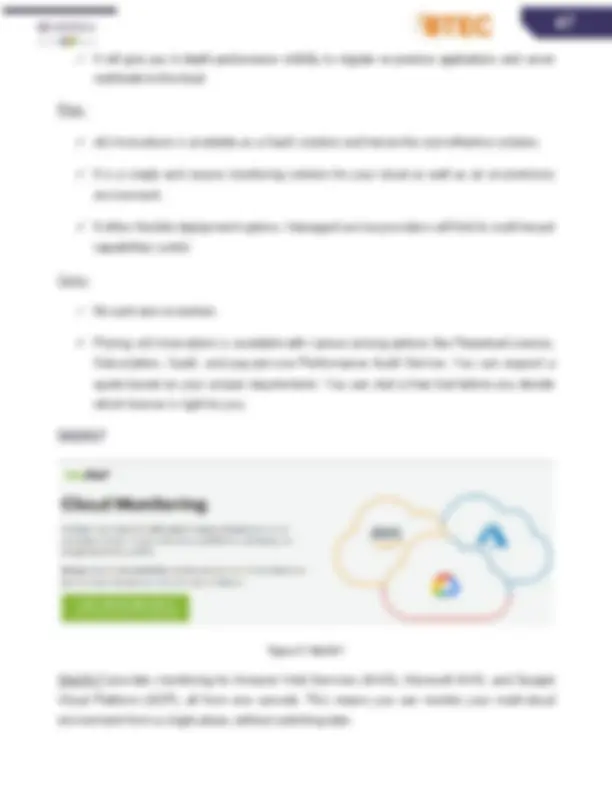
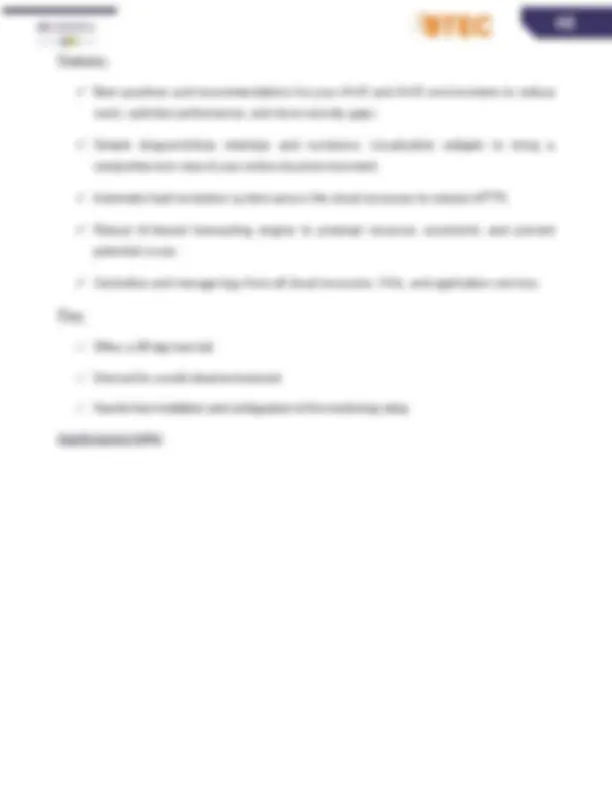
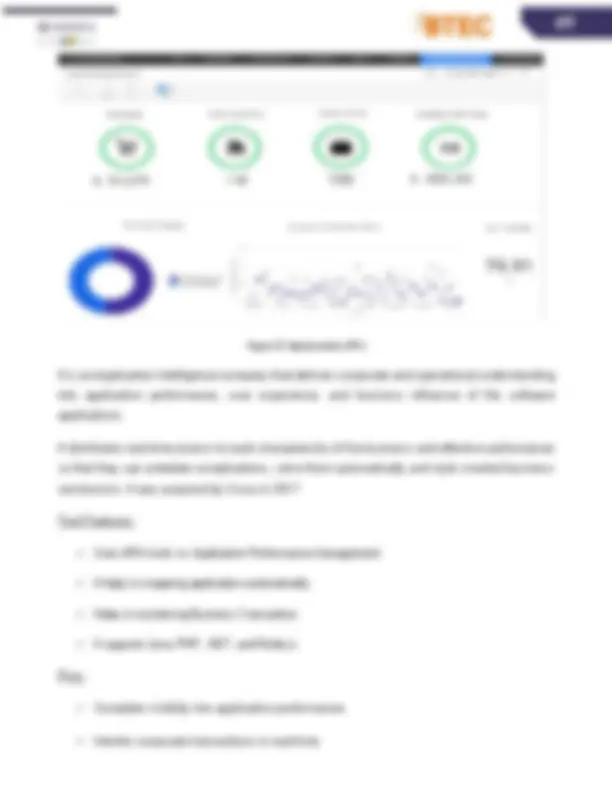
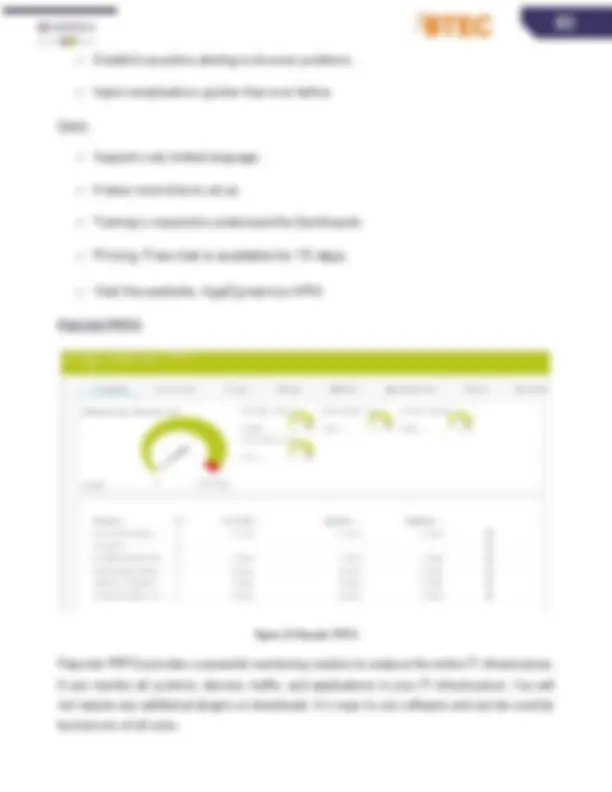
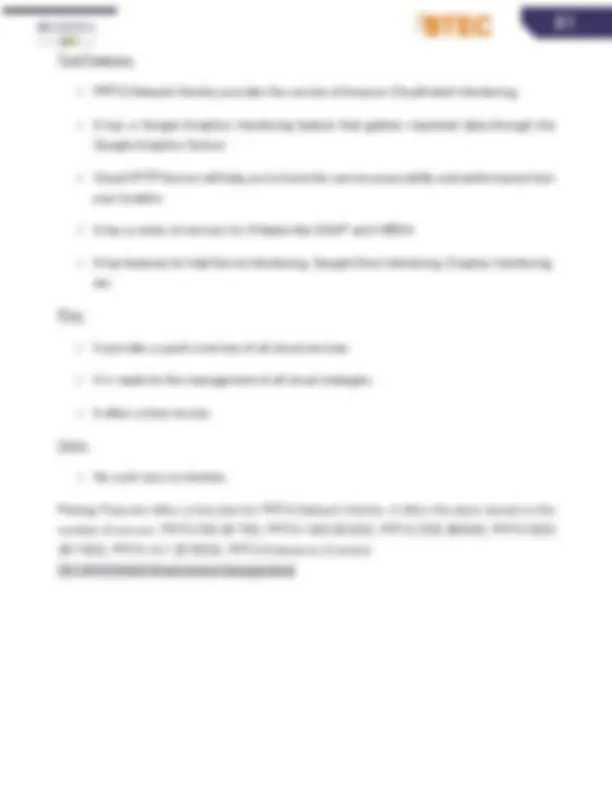
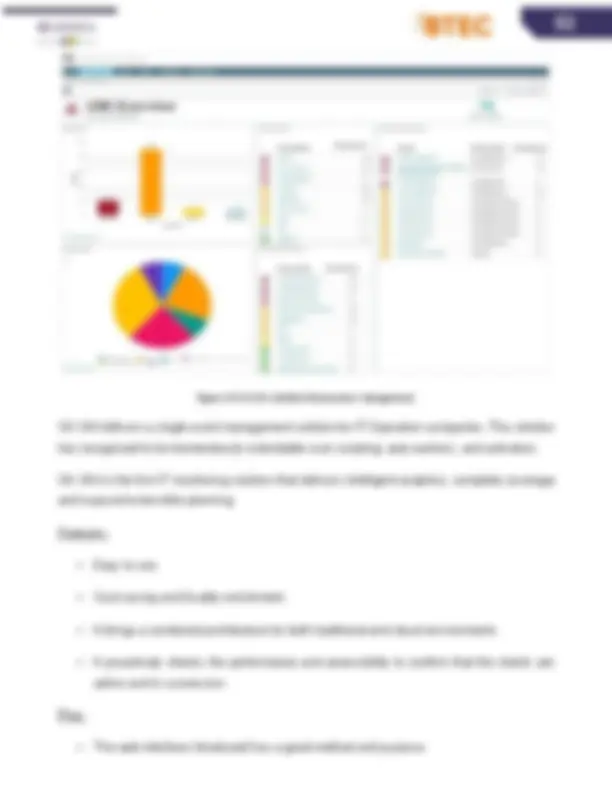
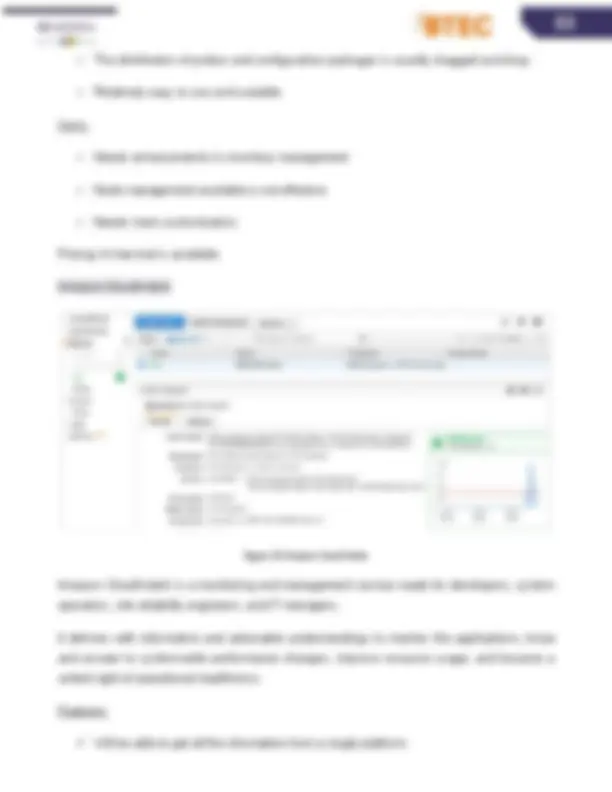
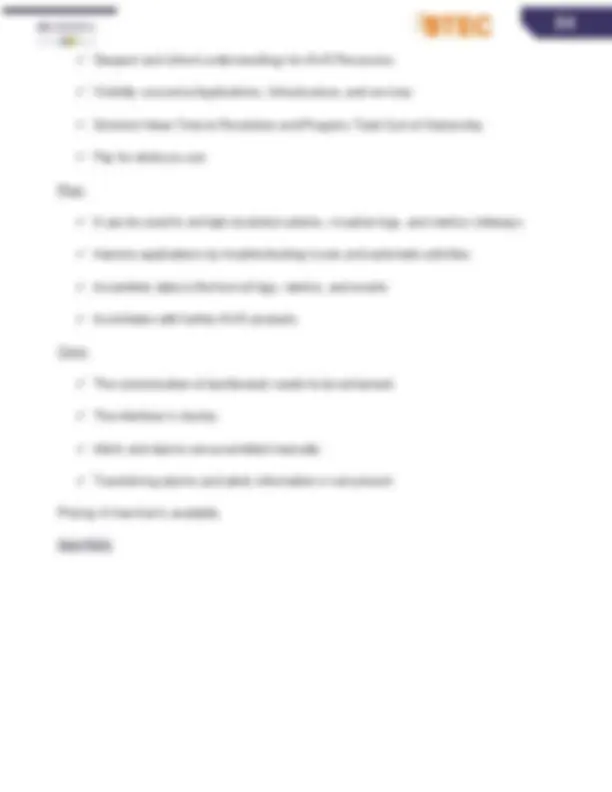
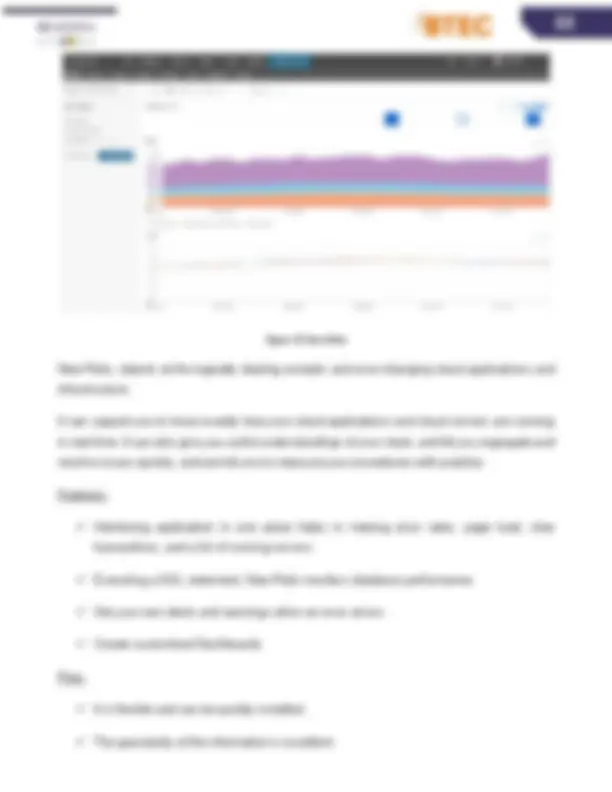

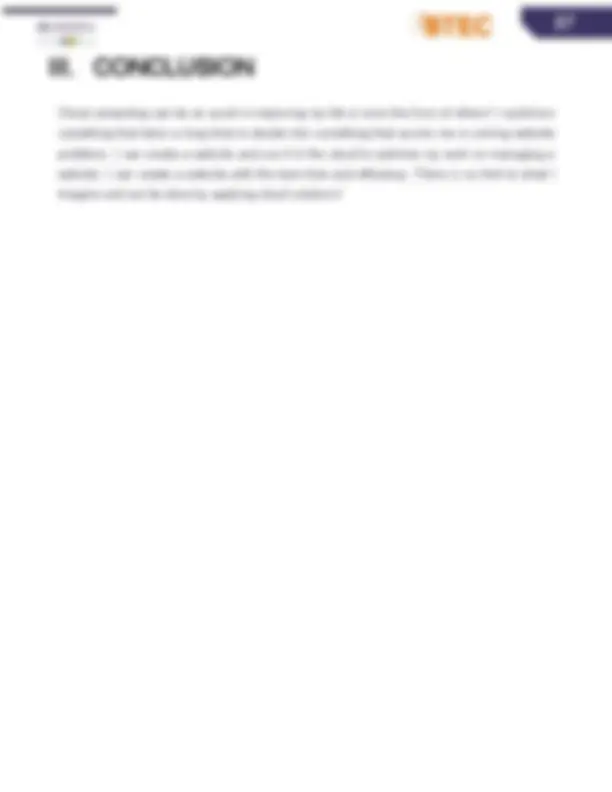
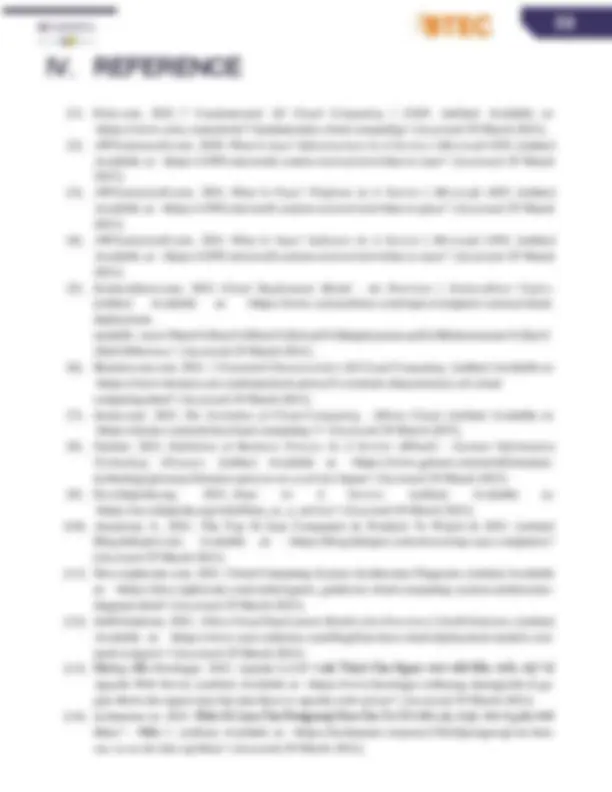



Study with the several resources on Docsity

Earn points by helping other students or get them with a premium plan


Prepare for your exams
Study with the several resources on Docsity

Earn points to download
Earn points by helping other students or get them with a premium plan
Community
Ask the community for help and clear up your study doubts
Discover the best universities in your country according to Docsity users
Free resources
Download our free guides on studying techniques, anxiety management strategies, and thesis advice from Docsity tutors
ATN is a Vietnamese company which is selling toys to teenagers in many provinces all over Vietnam. The company has the revenue over 500,000 dollars / year. Currently each shop has its own database to store transactions for that shop only. Each shop has to send the sale data to the board director monthly and the board director need lots of time to summarize the data collected from all the shops. My task in this assignment 1 learn about cloud computing subject from that is the premise for assignme
Typology: Study Guides, Projects, Research
1 / 65

This page cannot be seen from the preview
Don't miss anything!


























































Assessor name: Nguyễn Ngọc Tú Learner’s name: Huỳnh Thanh Dương
Class: GCS0804_NX
TABLE OF CONTENTS ASSIGNMENT 1 BRIEF __________________________________________ 3 ASSIGNMENT 1 FRONT SHEET ___________________________________ 6 I. Introduction ________________________________________________ 4 II. Learning Outcome ___________________________________________ 5
LO1 Demonstrate an understanding of the fundamentals of Cloud Computing and its architectures. LO2 Evaluate the deployment models, service models and technological drivers of Cloud Computing and validate their use. Assignment Brief and Guidance: Scenario ATN is a Vietnamese company which is selling toys to teenagers in many provinces all over Vietnam. The company has the revenue over 500.000 dollars/year. Currently each shop has its own database to store transactions for that shop only. Each shop has to send the sale data to the board director monthly and the board director need lots of time to summarize the data collected from all the shops. Besides the board can’t see the stock information update in real time. The table of contents in your technical report should be as follows:
Learning Outcomes and Assessment Criteria Pass Merit Distinction LO1 Demonstrate an understanding of the fundamentals of Cloud Computing and its architectures LO1 & 2 D1 Justify the tools chosen to realise a Cloud Computing solution. P1 Analyse the evolution and fundamental concepts of Cloud Computing. P2 Design an appropriate architectural Cloud Computing framework for a given scenario. M1 Discuss why an organisation should migrate to a Cloud Computing solution. LO2 Evaluate the deployment models, service models and technological drivers of Cloud Computing and validate their use P3 Define an appropriate deployment model for a given scenario. P4 Compare the service models for choosing an adequate model for a given scenario. M2 Demonstrate these deployment models with real world examples.
❒ Summative Feedback: ❒ Resubmission Feedback: Grade: Assessor Signature: Date: Signature & Date:
Table 1 Comparative table that provides an overview of the most business-critical features of each type. .............................................................................................................................. 35 Table 2 Comparative analysis of cloud service model ........................................................... 38
I. INTRODUCTION ATN is a Vietnamese company which is selling toys to teenagers in many provinces all over Vietnam. The company has the revenue over 500,000 dollars / year. Currently each shop has its own database to store transactions for that shop only. Each shop has to send the sale data to the board director monthly and the board director need lots of time to summarize the data collected from all the shops. My task in this assignment 1 learn about cloud computing subject from that is the premise for assignment 2.
II. LEARNING OUTCOME
Figure 1 A virtual cloud system These are the layers the cloud provides: ✓ The infrastructure layer is the foundation of the cloud. It consists of the physical assets — servers, network devices, storage disks, etc. Infrastructure as a service (IaaS) includes providers such as the IBM® Cloud. Using IaaS you don’t actually control the underlying infrastructure, but you do have control of the operating systems, storage, deployment applications, and, to a limited degree, control over select networking components. ✓ Print On Demand (POD) services are an example of organizations that can benefit from IaaS. The POD model is based on the selling of customizable products. PODs allow individuals to open shops and sell designs on products. Shopkeepers can upload as many or as few designs as they can create. Many upload thousands. With cloud storage capabilities, a POD can provide unlimited storage space. ✓ The middle layer is the platform. It provides the application infrastructure. Platform as a service (PaaS) provides access to operating systems and associated services. It provides a way to deploy applications to the cloud using programming languages and tools supported by the provider. You do not have to manage or control the underlying infrastructure, but you do have control over the deployed applications and, to some degree over application hosting environment configurations. ✓ PaaS includes providers such as Amazon’s Elastic Compute Cloud (EC2). The small entrepreneur software house is an ideal enterprise for PaaS. With the elaborated platform, world-class products can be created without the overhead of in-house production. ✓ The top layer is the application layer, the layer most visualize as the cloud. Applications run here and are provided on demand to users. Software as a service (SaaS) has providers such as Google Pack. Google Pack includes Internet accessible applications, tools such as Calendar, Gmail, Google Talk, Docs, and many more.
Figure 2 Cloud computing layers embedded in the “as a service” components Platform-as-a-service (PaaS) PaaS is a kind of service in which the vendor offers you everything you need to build your application like development tools, infrastructure, operating system. You get a complete environment to build, test and deploy your application. Example: Microsoft AWS, Heroku, Google App Engine Infrastructure-as-a-Service (IaaS) It is the most flexible kind of cloud service. In this kind of service, a company rents the infrastructure and storage they need from the cloud vendor and then use that cloud infrastructure to build their application. IaaS is like leasing land on which you can build whatever you want. Example: Digital Ocean. Function-as-a-Service (FaaS) Function as service is also known as serverless computing. The main idea behind serverless computing is that your application is broken down into separate functions that run when triggered by some action. Cloud deployment models ✓ Private Cloud In a Private Cloud, you create a cloud environment in a data centre that is completely dedicated to your organisation. This allows simulation of public cloud to your organisation, but you are completely responsible for the maintenance of hardware and the software services you provide. ✓ Public Cloud
The New developer Works survey shows dominance of cloud computing and mobile application development survey by IBM demonstrates that the demand for mobile technology will grow exponentially. This development, along with the rapid acceptance of cloud computing across the globe, necessitates a radical increase of developers with an understanding of this area. To meet the growing needs of mobile connectivity, more developers are required who understand how cloud computing works. Cloud computing provides an almost unlimited capacity, eliminating scalability concerns. Cloud computing gives developers access to software and hardware assets that most small and mid- sized enterprises could not afford. Developers, using Internet-driven cloud computing and the assets that are a consequence of this configuration, have access to resources that most could have only dreamed of in the recent past. The administrator Administrators are the guardians and legislators of an IT system. They are responsible for the control of user access to the network. This means sitting on top of the creation of user passwords and the formulation of rules and procedures for such fundamental functionality as general access to the system assets. The advent of cloud computing necessitates adjustments to this process, because administrators in such an environment is no longer merely concerned about internal matters, but also with the external relationship of their enterprises and the cloud computing concern. They are also concerned with the actions of other tenants in a public cloud. This situation alters the role of the firewall constructs that are put in place by the administration and the nature of the general security procedures of the enterprise. But it does not negate the need for the guardian of the system. With cloud computing comes even greater responsibility, not less. With cloud computing, the administrators must not only ensure data and systems internal to the organization, they must also monitor and manage the cloud to ensure the safety of their system and data everywhere. The architect The function of the architecture is the effective modeling of the given system’s functionality in the real IT world. The basic responsibility of the architect developing the architectural framework of the agency’s cloud computing model. The architecture of cloud computing is essentially comprised of the abstraction of the three layer constructs, IaaS, PaaS, and SaaS, in such a way that the particular enterprise deploying the cloud computing approach meets its stated goals and objectives. The abstraction of the functionality of the layers is developed so the decision makers and the foot soldiers can use the abstraction to plan, execute, and evaluate the efficacy of the IT system’s procedures and processes.
The role of the architect in the age of cloud computing is to conceive and model a functional interaction of the cloud’s layers. The architect must use the abstraction as a means to ensure that IT is playing its proper role in the attainment of organizational objectives. To cloud or not to cloud: Risk assessment The main concerns voiced by those moving to the cloud are security and privacy. The companies supplying cloud computing services know this and understand that without reliable security, their businesses will collapse. So security and privacy are high priorities for all cloud computing entities. Governance: How will industry standards be monitored? Governance is the primary responsibility of the owner of a private cloud and the shared responsibility of the service provider and service consumer in the public cloud. However, given elements such as transnational terrorism, denial of service, viruses, worms and the like — which could have aspects beyond the control of either the private cloud owner, public cloud service provider, and service consumer — there is a need for some kind of broader collaboration (particularly on the global, regional, and national levels). Of course, this collaboration must be instituted in a way that doesn’t dilute or otherwise harm the control of the owner of the process (or the subscribers in the case of a public cloud). Bandwidth requirements If you are going to adopt the cloud framework, your strategy must include evaluating bandwidth and the potential bandwidth bottleneck. In the CIO.com article: The Skinny Straw: Cloud Computing’s Bottleneck and How to Address It, the following statement is made: ✓ Virtualization implementers found that the key bottleneck to virtual machine density is memory capacity; now there’s a whole new slew of servers coming out with much larger memory footprints, removing memory as a system bottleneck. Cloud computing negates that bottleneck by removing the issue of machine density from the equation — sorting that out becomes the responsibility of the cloud provider, freeing the cloud user from worrying about it. ✓ For cloud computing, bandwidth to and from the cloud provider is a bottleneck. ✓ So what is the best current solution for the bandwidth issue? At the time of writing this article, the best answer is the blade server. A blade server is a server that has been optimized to minimize the use of physical space and energy. One of the huge advantages of the blade server for cloud computing use is bandwidth speed improvement. For example, the IBM BladeCenter is designed to accelerate the high- performance computing workloads both quickly and efficiently. Just as the memory issue
P2 Design an appropriate architectural Cloud Computing framework for a given scenario. Figure 3 Old system activity diagram Now problem we have after we analyze: In recent years researchers have conducted surveys from which to make findings about the challenges of current cloud computing. Since then the risks have become the top concern Security issue: ✓ Regarding data security, we cannot see the exact location where your data is stored or being processed. This increases the risks of cloud computing that may arise during cloud deployment or management. ✓ This makes it hard to trust sensitive and proprietary data into a third party and, indeed, highlights the challenges of cloud computing. Cost management and containment: ✓ One of the next risks of cloud computing is cost. ✓ In the cloud, an organization can easily enhance its processing capabilities without investing heavily in new hardware. Instead, businesses can access additional processing through paid models from public cloud providers. However, the on-demand nature and scalability of cloud services make it sometimes difficult to quantify and predict quantities and costs. ✓ Lack of resources/expertise: ✓ One of the cloud challenges that companies and businesses are facing today is the lack of specialized resources.
✓ Organizations are increasingly putting more workload into the cloud while cloud technologies continue to grow rapidly. Due to these factors, organizations are having difficulty keeping up with the tools. Compliance: ✓ One of the risks cloud computing is facing today is compliance. One of the risks that cloud computing is facing today is compliance. ✓ Every time a company moves data from internal storage to the cloud, it faces compliance with industry laws and regulations. Performance: ✓ When an enterprise moves to the cloud, it will depend on the service provider. ✓ When our suppliers go down, so do our businesses. ✓ With the inherent lack of control that comes with cloud computing, companies may encounter real-time monitoring issues. Migration: ✓ When businesses move from old technology to cloud computing will face many difficulties and challenges. ✓ The common challenges encountered when converting: ✓ Troubleshooting extensions. ✓ Security challenge. ✓ Data transfer is slow. ✓ Migration agents. ✓ Complex conversion. ✓ Time to stop the application. ✓ Building a private cloud: ✓ This is one of the main challenges for cloud computing. ✓ IT managers and IT departments will need to address the build and redo work by themselves, which can pose one of the most difficult challenges when moving to cloud computing. Possible Solutions to These Problems Security issue: